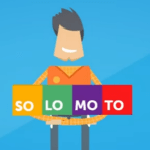

Why do startups fail in the B2B world? Any number of reasons. Today we’re going to take a look at some of the main reasons, and more importantly, what you can do about it.
The numbers are daunting. Startup failure rates indicate 50% of small businesses are out of business within five years.
However, rather than focus on the negatives, you can learn something by looking at WHY startups fail. As you structure your startup, you want to keep those common failure reasons in mind. Anticipate them. Avoid them. Compensate for them.
For anyone who doesn’t know what B2B stands for, it means businesses that sell to other businesses, rather than to consumers. Example: a marketing agency sells services to other businesses. Therefore, we refer to it as business-to-business, or B2B for short. On the other hand, a restaurant or gift shop sells to individual consumers. We refer to a business like that as business-to-consumer, or B2C for short. The challenges faced by each type of business are different. That’s why I want to focus just on B2B businesses today, so I can be more specific.
Here are five reasons why startups fail in B2B markets — and how you can avoid becoming a statistic.
1. Making the Buyer’s Decision Too Hard or Risky
This is a challenge that tends to afflict consultants selling services. Unless you’re selling to a former employer who already knows your capabilities, the buyer is a taking a risk on your startup consulting business.
Jill Konrath, author of Selling to Big Companies and SNAP Selling and someone with deep sales expertise, has advice. In an interview at Management Consulting News she notes:
“You need to think small, not big. Basically your goal should be to get an initial project that gives you a chance to prove your value and establish a relationship with someone in the company.
With that in mind, review your portfolio of services and ascertain which might be the easiest to get as a first project. It shouldn’t have a huge price tag.
And, it’s best if you don’t try to immediately dislodge a consulting firm that has a long-term relationship with the company. Instead you need to think about a possible business issue that the incumbent may have overlooked and slip into the account under the radar.”
While her advice was intended toward selling to large customers, it applies equally well when your target customers are small businesses. A narrowly defined starter project should be in your set of offerings. It should be something that doesn’t require too much commitment from the buyer, can be completed relatively quickly, and doesn’t cost much compared to the buyer’s budget. I’d add this: it should be something you shine at doing, so you can delight the customer on your first project.
Here’s another option to de-risk the buying decision: offer the traditional “money back guarantee.” Joel Libava, the franchise expert in residence here at Small Business Trends, has an email signature line that says “My Franchise Ownership Advisory Services Come With A 100% Money-Back Guarantee.”
But what if you’re not a consultant – you sell software? You, too, need to de-risk the transaction. It’s one reason that online cloud software has become such a popular business model. Instead of requiring a payment of hundreds or thousands of dollars for a software license, a customer can sign up online in minutes and pay a modest monthly fee. The buyer is taking a smaller chance. It makes his decision process less risky, especially if the price is under $50/month.
Offer a free trial and now you’ve made it even easier for the customer to try your product. Make your free trial one where no credit card is required for the trial — and now it’s almost completely risk-free to try your product.
An alternative to the free trial is the freemium business model. In freemium, you offer a product online for free. Users who want coveted extra features have to upgrade to a paid premium level. The beauty of freemium is that it lets the customer try it for free. Better yet, a freemium model develops an ongoing relationship. That gives you ongoing opportunities to convert users to paying customers. Eventually they may be asking you to develop features they’d pay for.
Freemium is a popular model, but not right for every B2B startup. For instance, if you’re selling a complex product into the large enterprise market, freemium may not be a good choice.
Remember, too, that even if you have no product but sell services, it may be possible to turn that into an online monthly-recurring model. Think outside the box about “productizing” your service (see #5 below).

2. Having an Unclear Value Proposition
Sometimes it’s just not clear what the business is selling, who the proper target customer is, and the problem you solve for them. Sounds crazy doesn’t it? Here you are in business but you’re still trying to figure out who your customer is or what the product should look like. But it’s a common scenario.
David Cummings, founder of Pardot, writes that the first 1 to 2 years in a B2B startup are spent finding a product/market fit. You need to get the first 20 customers signed up, and gain a better understanding of them and their needs.
Startups often look very different a few years after launch. What I mean is, the product is different or the market being served is different, compared with the initial vision. That’s because after being in business for a while, actually dealing with customers, you understand the market better.
Whether you’re a service provider or starting a tech company, once you go to market you figure out exactly what your offerings should entail. You discover which targets value the product — and which parts of it they value. You understand which vertical markets to serve. Sometimes the startup evolves to focus on a narrow niche. Other times the product is scrapped completely and something new takes its place, based on that early learning.
If you can’t pin down what the customer truly values and is willing to pay for, and who your customer really is, then you may never make it past that initial stage.

3. Too Long A Sales Cycle
A couple of years ago, a consultant worked with me in a business development and strategic planning capacity. His expertise was in a consumer-based industry. As we evaluated different opportunities and tried to forecast sales, one day he just blurted out, “Wow, it takes a long time to move the revenue needle, because it takes a long time to close a sale to another business!”
Now, to me, it didn’t seem that long. In that case, we were looking at 90 days. I’ve known B2B sales cycles that can take a year or more. But when you’re used to retail sales that are made on the spot in a matter of minutes, then 90 days seems very long.
As a broad rule of thumb, the bigger the sale amount, the longer the sales cycle.
One danger with long sales cycles is that it just takes too long to get your first customers. When I worked in a software business, and we introduced new products, we called that “getting referenceable customers.” With a completely new product you need early customers, for a number of reasons. One reason is so that you can point to those early birds in other sales calls. Prospects always ask, “How many customers do you have?” “Who else is using your product?” Startups with a long sales cycle get caught in a catch 22: they need customers to point to, but it takes too long to get them.
Another danger, of course, is that your business will run out of cash. You have to invest up front in development, marketing and sales, even before a single sale is closed. And that takes money. Even if you have a full pipeline and interested prospects, your money may run out before you close enough sales. The runway is not long enough.
So what do you do?
First of all, try to shorten the sales cycle. Re-evaluate your business model. For this it helps to have someone — a mentor, a smart colleague, a business coach — look at your “quote to cash cycle” with fresh eyes.
For tech companies, a cloud services business model where customers pay a small fee monthly instead of one large up-front free, may help. At least then it’s easier to get those all-important first customers. Plus, a cloud model often makes marketing easier. The only proviso is, that it’s like building a castle a grain of sand at a time. Monthly recurring revenue models are very profitable in later years, but can take a long time to generate meaningful monthly revenue.
It’s not always possible to abbreviate the sales cycle enough to solve cash flow issues. In that case, you’re going to need a source of funding to get you through the early days (personal savings, friends/family, angel investment). If that’s not possible, then you’re going to need to find something easier to sell, while you’re waiting for the big ticket sales to close.
For instance, if you are developing a product that simply will take a long time, perhaps offer freelance programming services or consulting on the side. If you are a former corporate employee, doing some consulting for your former employer may provide needed cash flow while your pipeline fills and eventually sales start to close.
As I was growing Small Business Trends, for years I wrote freelance articles, served as an editor for another site, and consulted on the side. It was like I had two jobs – one for the services I hired out, and one growing my business. Sounds like a drag, doesn’t it? It was. But I was faced with the reality of needing cash flow while my site grew large enough to attract sponsors and sustain revenue. To deal with the workload and drudgery, you need a strong vision and sense of optimism to sustain you. And there are trade-offs. Growth took longer than if I had obtained outside funding. But the advantage is that I didn’t have to give up equity. I didn’t have to go into debt.

4. Spending on the Wrong Things in Your B2B Startup
There’s a way to start a business — and a way not to start a business.
You could spend the first six months outfitting your business with expensive equipment, furniture and office space. Or you could focus on getting sales instead.
Inexperienced business owners, especially those who come from a corporate background where offices are fully tricked out with staff to spread the work around to, often spend too much in the beginning. Not only do you waste precious cash, but it’s the wrong mindset. Startup founders need to be focused on money coming in the door, not money going out.
Some businesses have no choice. Retail, restaurants, medical, manufacturing — they need to be outfitted in order to open the doors. But many B2B businesses can be frugal.
Try to get by with little infrastructure in the beginning. For instance, businesses such as Web design, marketing agencies, consulting, publishing, writing, virtual assistant services, and event management do not require you to have an office with full-time staff. Using the power of the human cloud, you could look for freelancers all over the world (or locally). Assuming you are disciplined enough, you could work out of your home instead of investing in office space.
The same goes for hiring. Getting your first employees is both exhilarating and challenging. Yet, hiring too quickly can be expensive, and can distract and derail the company. And since it is hard to scale back once employees are on the payroll, hiring too fast is the fastest way to recurring monthly losses.
Patrick Hull suggests on Forbes that you should hire slow and fire fast. He writes, “When it comes down to it, employees can be a huge cost for your business and can become an even bigger cost if they don’t fit. That is why it’s important to take a step back and really think about each and every hire you make.” I definitely agree with the “hire slow” part. However, firing fast is easier said than done. Firing often brings drama, legal entanglements and expense — three things that can devastate a small company.
Noted startup investor Paul Graham points out that hiring a lot of people paradoxically can slow you down. It takes time to recruit and onboard your new hires, communicate with them, and get them buying into the vision. And you probably aren’t going to be ready for them at first, unless they are selling, building your product, or delivering your service.
Check out my list of 18 startup costs to avoid – especially in the first 6 months. They include office space, trademark filings, large print runs and more.
5. Not Having a Scalable, Profitable Process
This is a huge issue with service providers such as marketing agencies. All too often you hear about small businesses where the owner succumbs to the straw that breaks the camel’s back. One day she decides to close up shop and get a job. Why? She and her team are working hard, but barely making money. After another sleepless night worrying about how to make payroll that month, she has just “had it.”
A few years ago, John Warrillow, a very successful entrepreneur in the business services space, wrote a book called “Built to Sell.” In it he discusses why so many service businesses have a hard time. After years of struggling often the owner can’t even sell the business – because there’s so little value in it. And the owner never seems to get ahead and earn enough profits.
For profitability and growth, you want to create a business that is scalable, with replicable processes. Otherwise, too many projects are one-offs. That’s a problem for two reasons. (1) It hamstrings profits – you never gain efficiencies if you’re always doing something new. (2) You’ll never develop deep expertise that differentiates your business, either, if you’re forever dabbling here and there.
Here are just some of his lessons about creating replicable, profitable processes:
- “Being a generalist forces you to hire generalists and your offering will be average at best.”
- “If you run a service business that’s highly dependent on a single client who depends on you personally to tend to their account and you compete with a lot of other players who provide similar services – your business is virtually worthless. Make sure that no one client comprises more than 15% of your revenue.”
- Define your service as if it were a product. “Productize it.” That means that you describe your unique service process as features that are unique to you. If you’re selling a product, you can create a flat fee as a price and get paid up-front.
- “Prove that you’re serious about specialization by turning down work that falls outside your standard service.”
Those are important lessons for all service providers, if you want to get past living from hand-to-mouth in your business.
Conclusion
These five are not the only reasons B2B startups fail. I won’t kid you. Other things can get in the way. Maybe it’s the economy, or maybe you launched before the market was ready for your product. Despite your best efforts, a business may still fail. But armed with knowledge, perseverance and a positive attitude, you may be able to avoid becoming a statistic.
Images via Shutterstock: Startups, value, solution, chart, process











